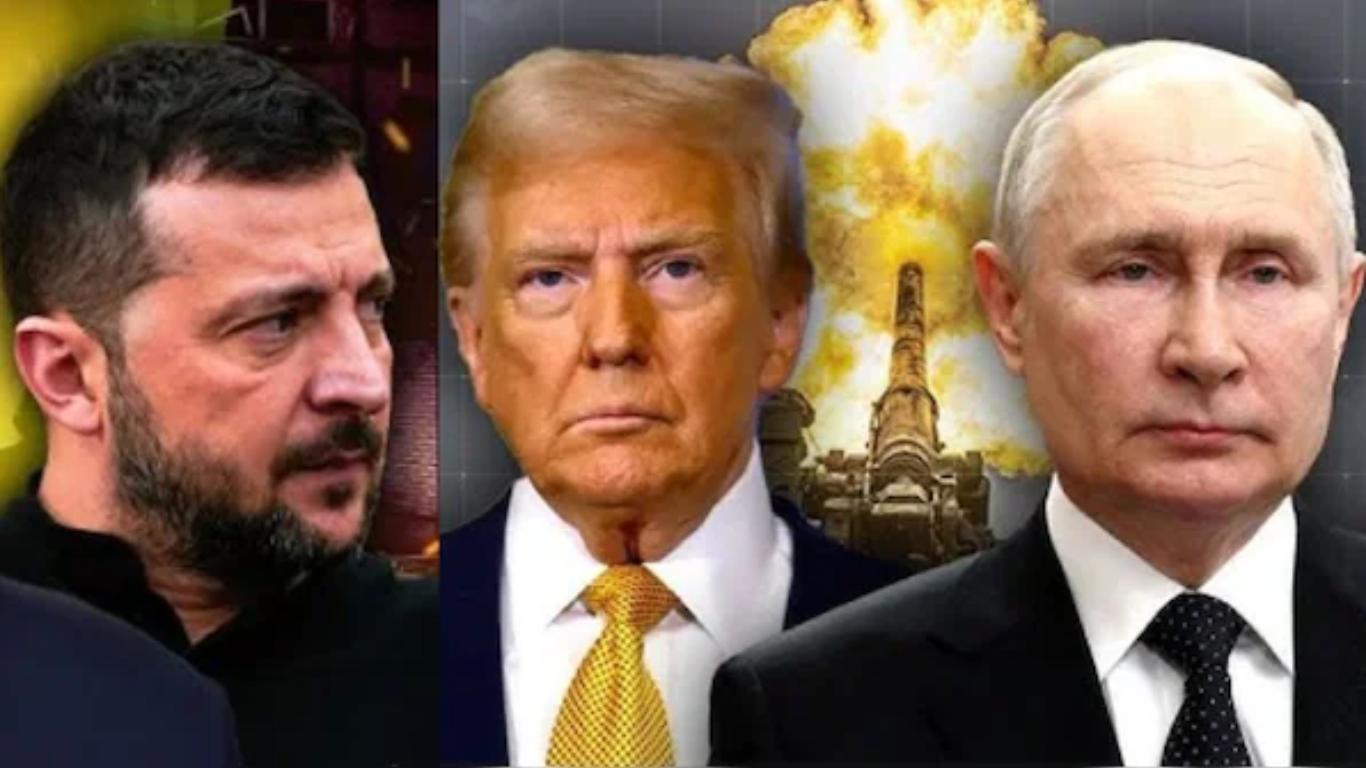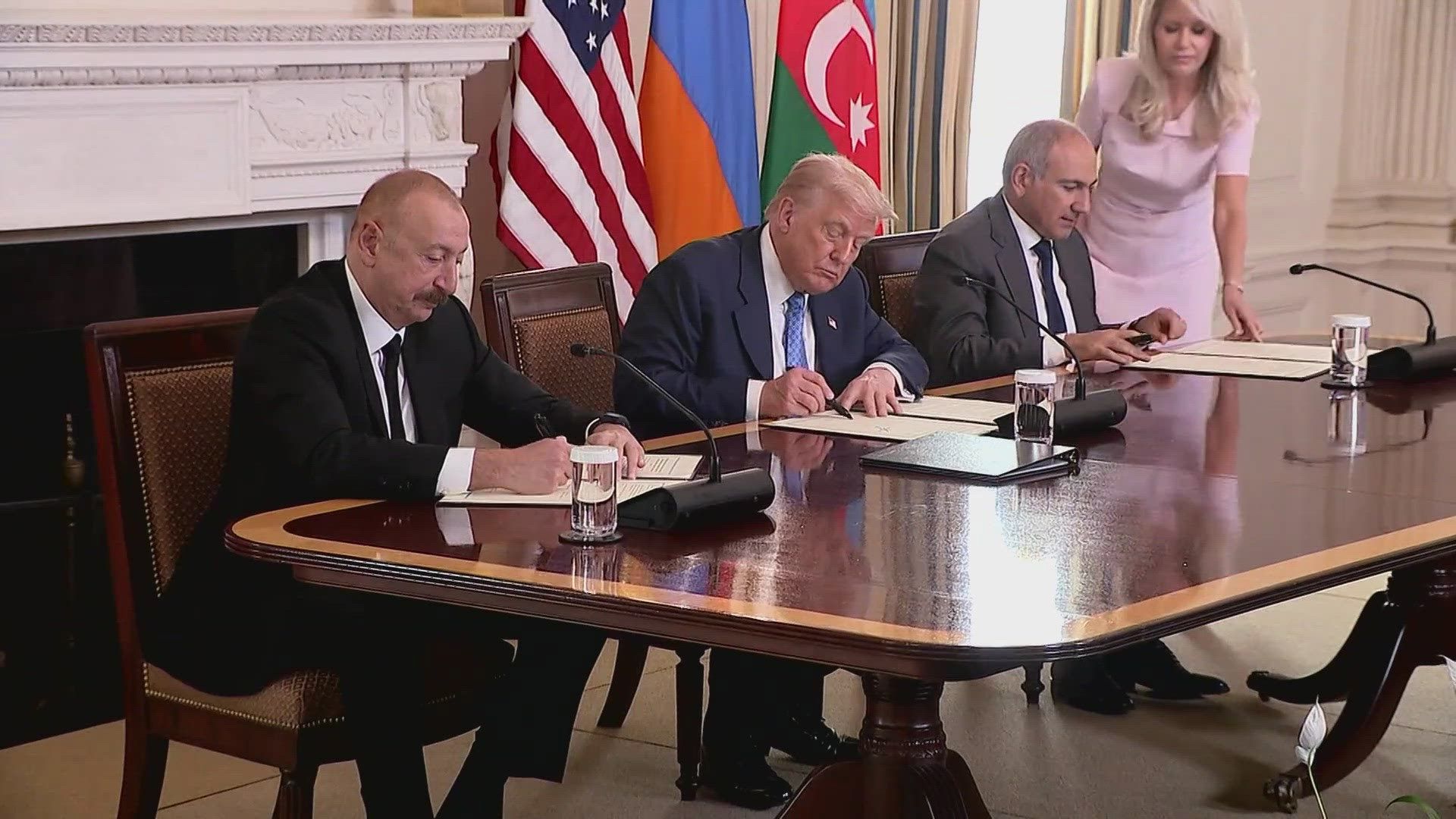Trump’s Alaska meeting puts Ukraine and beyond in spotlight [ANALYSIS]
![Trump’s Alaska meeting puts Ukraine and beyond in spotlight [ANALYSIS]](https://www.azernews.az/media/2025/08/13/759057837438975_1.png)
Trump–Putin Summit:
- Symbolic but fraught: first bilateral summit on US soil since 1988.
- Ukraine sidelined; risk of forced territorial swaps without its consent.
- Could legitimise aggression and enable delays for Russia to reinforce.
Concessions to Russia:
- Dangerous precedent; diplomatic pause but not peace.
- Weakens Western unity, emboldens further expansionism.
South Caucasus Ramifications:
- US-brokered infrastructure projects like the "Trump Corridor" already shifting regional balance.
- Could form the backbone of a larger US strategic footprint.
- Risks: sovereignty concerns, regional backlash, and Russian retaliation.
The summit between President Donald Trump and President Vladimir Putin, scheduled for 15 August 2025 in Anchorage, Alaska, is extraordinary in both form and timing. It marks the first in-person meeting on US soil since the 1988 Governors Island Summit. Alaska, a former Russian territory acquired by the United States in 1867, carries enduring historical and symbolic weight in US–Russian relations.
Officially billed as a "listening exercise", the summit nonetheless brims with geopolitical hazard. Ukraine, entirely excluded, has been rendered an observer of its own fate, even as its very territory is on the table. This imbalance mirrors Trump’s history of favouring theatrical peace over substantive gain, exemplified most famously in Helsinki 2018.

Risks of territorial concessions for Ukraine
A major concern is Trump’s public suggestion of "some swapping of territories" between Russia and Ukraine. Analysts warn that pressuring Ukraine into such swaps, especially without its direct involvement or consent, risks legitimising aggression, eroding sovereignty, and emboldening further Russian expansion. The Atlantic Council warns that such a concession may pause hostilities, but definitively prevent a durable peace.
Indeed, Russia appears to be exploiting this diplomatic opportunity. Putin is seeking to cement his territorial gains, keep Ukraine out of NATO, and prevent Western troops from redeploying near its borders—effectively redrawing the strategic map with American acquiescence. His forces continue to press offensives at Dobropillia and other fronts, signalling that any ceasefire without Ukrainian participation may merely enable further advances.
Although Trump’s team has attempted damage control, casting the summit as exploratory rather than definitive, and insisting no unilateral deal will be made, the optics are perilous. Ukraine’s President Zelensky has insisted repeatedly: "No one will back off from this… Ukrainians will not surrender their land". European leaders have echoed this sentiment, emphasising that meaningful negotiations must include Ukraine, occur within a ceasefire framework, and uphold international law.
Trump’s upcoming Alaska meeting, which is set to take place without Ukraine, has once again drawn not so much the approval as the anger of official Kyiv and European leaders. This, in turn, is a clear indication that no decisive outcome is likely to be achieved. Presumably, Donald Trump is effectively engaging in open bargaining over the world map. To some, this makes him appear less a bold diplomat and more a trader who relishes taking risks.
Consequences for South Caucasus: New front of interests
With the spotlight on the Trump–Putin summit, few have adequately considered its implications for the South Caucasus. Yet, that region is already being reshaped by US initiatives that sharply reduce Russian sway.
Most notably, the US-brokered Zangazur Corridor (also labelled "TRIPP") deal effectively creates a transit route linking mainland Azerbaijan to its exclave Nakhchivan over Armenian territory. The United States will sublease the land under Armenian jurisdiction for nearly a century, enabling road, rail, energy, and telecom infrastructure projects, a striking geopolitical move to bypass Russian and Iranian influence. Azerbaijan’s President Ilham Aliyev and Armenia’s Prime Minister Nikol Pashinyan praised the deal as a breakthrough, while critics warn of sovereignty issues and authoritarian risk.
This demonstrates that, while Trump may appear to grant ground in Europe, he is simultaneously extending American influence eastwards.
However, the true nature of the matter is entirely different from how it appears.
First and foremost, the corridor known as Zangazur or TRIPP holds historical and strategic significance above all for Azerbaijan, which is why its opening carries vital importance for the region. Until now, neither the United States nor any other party has shown as much interest or persistence in the opening of the Zangazur Corridor as Azerbaijan. Since the 1920s, the deliberate appropriation of Zangazur lands by Armenia and the settlement of an Armenian population there have, from time to time, placed the territory of Nakhchivan in an artificial state of blockade. During the thirty years of occupation, Azerbaijan repeatedly appealed to the United Nations and several other international organisations to lift Nakhchivan’s blockade, yet such efforts proved futile—just as they did in relation to the occupation of Garabagh.
Ultimately, although the territorial dispute between Armenia and Azerbaijan over Garabagh was resolved through force, the Zangazur issue remained on the agenda as a contentious matter. Choosing a joint mediator for this issue had to be based on the mutual consent of the parties—either Russia or the United States.
Naturally, Russia’s increasingly tense relations with both Armenia and Azerbaijan in recent times have cast doubt over its credibility as a mediator. Moreover, Armenia and its historic enemy Iran—despite Moscow and Tehran’s outward claims of strategic cooperation—took a sharply negative stance, effectively sidelining Russia. The more pragmatic and economically promising approach of the United States, and in particular of Donald Trump, has therefore made it appear the more suitable partner in the South Caucasus.

Trump’s South Caucasus strategy amid Russian expansionism
If Trump goes ahead with concessions to Russia over Ukraine, the South Caucasus may become even more strategically desirable, both as a zone for US infrastructure diplomacy and a buffer against Russian power projection. The Zangazur Corridor (TRIPP) already serves as tangible proof of this concept.
Trump might implement a broader "South Caucasus project" by doubling down on infrastructure and trade deals, seeking to entrench US interests, foster regional interdependence, and weaken Russian linkage. Armenia’s opening, Azerbaijan’s strategic need for connectivity, and Turkiye’s and Central Asia’s western orientation all present ripe opportunities.
However, such moves risk exacerbating regional tensions, especially if local actors perceive US involvement as leverage over domestic issues or sovereignty. Moreover, if Trump’s concessions in Ukraine embolden Russia, Moscow may retaliate by ramping up pressure in Garabagh or Georgia, challenging US-backed stability.
Securing the corridor will require sustained diplomatic pressure, careful management of Armenian concerns, and a willingness to navigate the sensitivities of regional players. It will also demand that Azerbaijan continue to assert its priorities clearly and consistently—an area where Baku has already demonstrated considerable skill.
The ultimate success of the project will rest on whether it is framed not as a concession to any one power, but as a mutually beneficial arrangement rooted in the principles of sovereignty, connectivity, and regional stability.
Azerbaijan’s steadfast pursuit of the Zangazur Corridor underscores both its diplomatic agility and its political will to secure strategic objectives despite external pressures. Baku has shown that it will neither yield to regional manipulation nor accept arrangements that undermine its sovereignty. Against the backdrop of Russia’s expansionist ambitions and the United States’ re-energised engagement in the South Caucasus, Azerbaijan has positioned itself as the decisive actor shaping the region’s future.
By balancing assertive diplomacy with strategic partnerships, Azerbaijan is not merely reacting to the shifting balance of power - it is actively influencing it. In doing so, it has ensured that the Zangazur Corridor is more than a line on a map; it is a statement of national resilience and a pillar of the country’s long-term geopolitical strategy.
Here we are to serve you with news right now. It does not cost much, but worth your attention.
Choose to support open, independent, quality journalism and subscribe on a monthly basis.
By subscribing to our online newspaper, you can have full digital access to all news, analysis, and much more.
You can also follow AzerNEWS on Twitter @AzerNewsAz or Facebook @AzerNewsNewspaper
Thank you!

